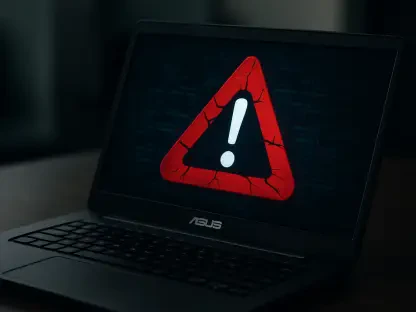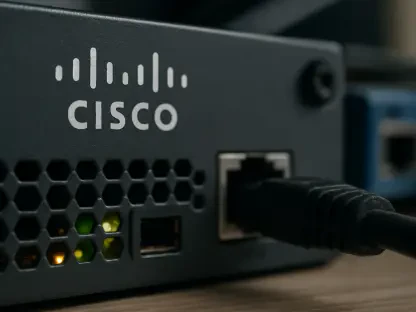Unveiling a Digital Threat to Industry Giants
In an era where digital transformation drives the automotive sector, a single cyber-attack can unravel years of operational excellence, as evidenced by the recent disruption at Jaguar Land Rover (JLR). On September 2, a devastating cyber incident struck this UK-based titan owned by Tata Motors, halting production, slashing sales by 25%, and sending tremors through the global supply chain. This market analysis delves into the profound implications of this breach, examining how it reshapes competitive dynamics, exposes vulnerabilities, and signals urgent trends in cybersecurity investment. The purpose is to uncover the broader market shifts triggered by such events, offering insights into how manufacturers can navigate an increasingly perilous digital landscape. Beyond just numbers, this exploration aims to spotlight the strategic pivots necessary for resilience in a sector where innovation and risk now walk hand in hand.
Market Dynamics: Dissecting the Impact and Emerging Trends
Operational Disruptions and Competitive Shifts
The cyber-attack on JLR has cast a stark light on the fragility of digitized manufacturing in the automotive industry. Production at key UK plants like Solihull and Halewood screeched to a halt for over a month, directly contributing to a 24.2% drop in wholesale units to 66,165 and a 17.1% decline in retail sales for the quarter ending September 30. This operational paralysis not only dented JLR’s output of iconic models like the Range Rover but also handed a temporary advantage to unaffected competitors, potentially altering market share in the luxury vehicle segment. As manufacturers race to digitize assembly lines and integrate connected technologies, this incident underscores a critical market tension: the push for efficiency often amplifies exposure to digital threats, reshaping how firms prioritize operational security over unchecked automation.
Financial Ripples and Investor Sentiment
Beyond factory floors, the financial repercussions of the JLR breach have rattled stakeholders across the sector. The reported 25% slump in volume sales, compounded by external pressures like US tariffs on exports and the phase-out of legacy Jaguar models, paints a grim picture for short-term revenue projections. Market analysts anticipate lingering sales declines over the next few quarters as backlogs persist and consumer confidence wavers, potentially impacting investor trust in JLR’s parent company, Tata Motors. This financial strain highlights a broader trend—cyber incidents are no longer mere operational hiccups but catalysts for volatility in stock valuations and long-term growth forecasts, pushing automotive firms to reassess risk management as a core component of fiscal strategy.
Supply Chain Vulnerabilities and Ecosystem Strain
The ripple effects of JLR’s cyber crisis extend deep into the interconnected web of the automotive supply chain, revealing systemic vulnerabilities. Suppliers dependent on JLR’s consistent demand faced immediate job losses due to suspended orders, prompting the company to launch a financing scheme with a banking partner, offering upfront cash and accelerated payments by up to 120 days. While this initiative mitigates short-term cash flow issues, it exposes a market-wide challenge: a single breach at the top can destabilize an entire network of smaller players. This dynamic is driving a reevaluation of supply chain resilience, with trends pointing toward diversified sourcing and contingency planning as essential buffers against future disruptions in the sector.
Cybersecurity as a Market Differentiator
Turning to forward-looking trends, the JLR incident signals a seismic shift in how cybersecurity shapes competitive positioning within automotive markets. Industry projections suggest that cybersecurity spending in manufacturing could double by 2030, fueled by innovations like AI-driven threat detection and blockchain for secure data exchanges. Regulatory bodies are also tightening standards, compelling firms to embed digital defenses into their core operations. With groups like Scattered Spider—linked to JLR’s breach—escalating their sophistication, cybersecurity is emerging as a key market differentiator, where companies that invest proactively may gain not just protection but also a reputational edge over rivals slow to adapt.
Strategic Reflections and Pathways Forward
Looking back, the cyber-attack on JLR served as a defining moment that exposed critical weaknesses in the automotive market’s digital infrastructure, from a 25% sales drop to widespread supply chain disruptions. The incident highlighted how deeply intertwined operational success and cybersecurity have become, with financial losses and competitive setbacks amplifying the urgency for change. It also revealed the cascading impact on suppliers, whose struggles underscored the fragility of industry ecosystems under digital duress. Moving forward, automotive leaders must prioritize robust cyber defenses, integrating regular system audits and employee training to preempt threats. Building redundant operational frameworks and fostering diversified supplier networks can further insulate against similar crises. Finally, collaboration with regulators and tech innovators to adopt cutting-edge security tools will be crucial in transforming vulnerabilities into strengths, ensuring that the sector not only recovers but thrives in an era of relentless digital challenges.









